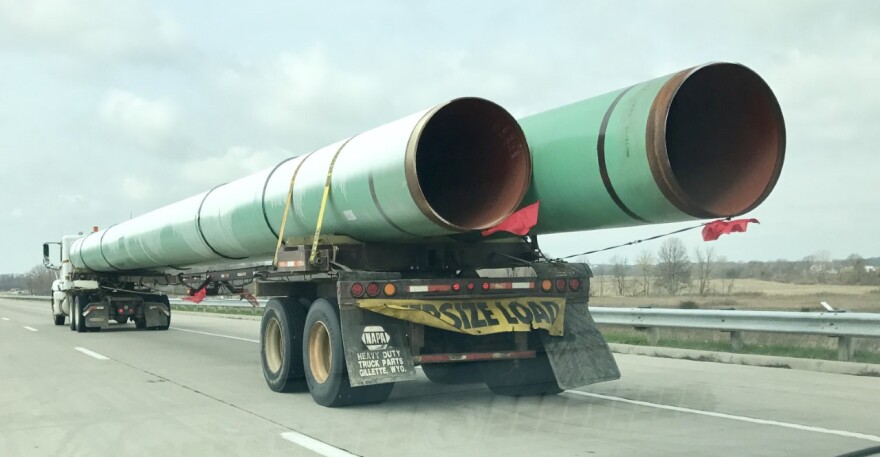Update: The company building the Rover pipeline maintains the loss of the nearly 150,000 gallons of drilling fluid is not a spill and says it is continuing to work through the process, and we are working in coordination with FERC on all of the remaining HDDs and are in compliance with the HDD contingency plan that was approved by FERC. "
The $4.2 billion Rover pipeline cutting diagonally across Ohio is drawing more concern from state regulators. WKSU’s M.L. Schultze has more on a letter the state wrote last week about a new spill.
The Ohio EPA has told the Federal Energy Regulatory Commission that it is “deeply concerned” about nearly 150,000 gallons of drilling fluid that was “lost down a hole” beneath the Tuscarawas River in southwestern Stark County. That’s the same site where more than 2 million gallons of the fluid – mixed with diesel – leaked last April and turned up in a wetland.

Horizontal drilling to lay the pipe beneath highways and rivers was suspended then but allowed to resume in December. The pipeline owner, Energy Transfer Partners, has said that it’s continuing to follow a plan approved by the feds and state EPA.
The state has sued Rover over the cleanup costs from the first spill. There’s no indication if the fluid in the latest spill contained diesel.
The EPA's letter notes that the company is now flying drones to monitor surface leaks and has recovery equipment in place.
The pipeline is expected to pump 3.25 billion cubic feet of gas per day from the Marcellus and Utica shale fields. That’s enough to supply more than 15 million households.
Editor's note: The company building the Rover pipeline maintains the loss of the nearly 150,000 gallons of drilling fluid is not a spill and says it is continuing to work through the process, and we are working in coordination with FERC on all of the remaining HDDs and are in compliance with the HDD contingency plan that was approved by FERC. "








